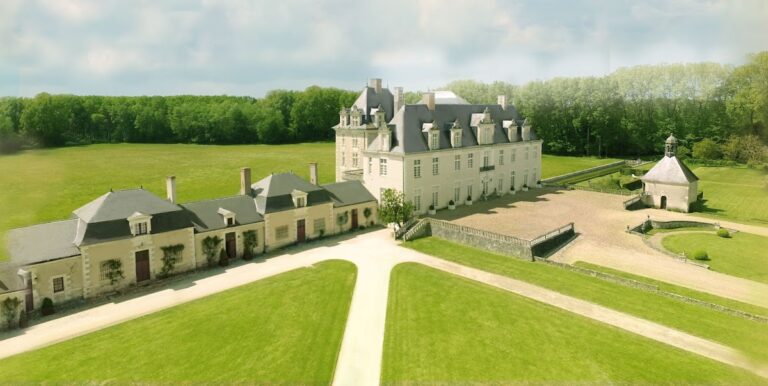Château de Langeais: A Historic Medieval Castle in France
Visitor Information
Google Rating: 4.6
Popularity: Medium
Google Maps: View on Google Maps
Official Website: chateau-de-langeais.com
Country: France
Civilization: Medieval European
Remains: Military
History
The Château de Langeais is located in the town of Langeais, within the Indre-et-Loire department of the Centre-Val de Loire region in France. It was originally established by the medieval civilization of the Counts of Anjou, a powerful feudal dynasty in western France.
The castle’s origins date back to 992 when Fulk Nerra, Count of Anjou, built a wooden motte-and-bailey fortress on a rocky spur overlooking the Loire River. This site was strategically chosen to control the river’s right bank and mark the border between the counties of Anjou and Blois. Shortly after its construction, the fortress faced attacks from Odo I, Count of Blois, in 992 and again between 994 and 996, involving King Hugh Capet and allied forces. Fulk successfully defended the site and soon replaced the wooden tower with one of France’s earliest stone keeps, marking a significant development in medieval military architecture.
Throughout the 11th century, the castle was a contested stronghold, frequently changing hands between the counts of Anjou and Blois. Fulk Nerra recaptured it in 1038 after a siege, reinforcing its role in regional power struggles. In the 12th century, Richard the Lionheart, who was both King of England and Count of Anjou, expanded and strengthened the castle’s defenses. However, in 1206, King Philip II of France seized the fortress, bringing it under the French crown’s control.
During the Hundred Years’ War, the castle was destroyed by English forces. It was rebuilt around 1465 under King Louis XI, with construction overseen by Jean Bourré and Jean Briçonnet. The reconstruction was completed in 1469, resulting in the well-preserved late medieval structure seen today. A notable event at the castle was the royal wedding of Charles VIII and Anne of Brittany on December 6, 1491. This marriage symbolized the union of Brittany with the Kingdom of France.
The Château de Langeais remained royal property until the reign of Louis XIII. Afterward, it passed through various noble families but gradually fell into neglect. During the French Revolution and the early 19th century, the castle was partially ruined and repurposed as stables and a prison. Parts of its grounds were converted into orchards and vineyards.
Restoration efforts began in 1833 and intensified after Christophe Baron acquired the castle in 1839. He restored the building with artistic care and assembled a museum-like collection. Later, his son sold much of this collection. In 1886, banker Jacques Siegfried purchased the castle and undertook extensive restoration with architect Lucien Ruau and archaeologists. Siegfried bequeathed the castle to the Institut de France in 1904, which still owns it. The castle was officially classified as a monument historique in 1922, with parts of its park protected since 1942.
Remains
The Château de Langeais occupies a rocky spur approximately 100 meters long, bordered by the Loire and Roumer rivers. The site includes an early medieval stone keep and a later 15th-century castle built at the foot of the original fortress. The layout reflects a combination of military and residential functions.
The original stone keep, constructed shortly after 996, stands about 16 meters tall with walls up to 2 meters thick. It is one of the oldest surviving stone keeps in France and an early example of Romanesque architecture. The keep has a square plan with two floors: a ground floor used for storage and an upper floor serving as living quarters, featuring a fireplace. Access was deliberately difficult, with the entrance placed high and reached via an adjoining tower containing a staircase.
Surrounding the keep was a fortified enclosure with a dry moat and a motte that originally held a wooden tower. This wooden structure was replaced by the stone keep. Defensive walls extend roughly 130 meters, featuring battlements and machicolations—openings through which defenders could drop objects on attackers. The courtyard façade was enhanced during 19th-century restorations with delicate decorative elements resembling lace.
The 15th-century castle built under Louis XI is well preserved. It includes a functioning drawbridge, high roofs, a walkway along the walls called a chemin de ronde, and monumental sculpted chimneypieces unique in France except for those at Château de Bourges. The west façade facing the garden displays Renaissance decorative motifs, reflecting the transition from medieval to Renaissance styles.
Inside, the castle contains fifteen furnished rooms, including the “Salle des Preux,” which houses a nearly complete set of seven early 16th-century tapestries depicting the Nine Worthies, a rare and important collection. The attic preserves a large medieval timber roof structure in excellent condition, showcasing original carpentry techniques.
The grounds feature a belvedere overlooking the Loire River and a treehouse built in a large cedar of Lebanon. The drawbridge remains operational, one of the few medieval drawbridges still functioning in France. Restoration in the late 19th century aimed to revive the castle’s Flamboyant Gothic style, with furniture and woodwork partly original and partly faithful reproductions based on 15th-century models. Floor tiles were restored using period patterns or designs inspired by contemporary paintings.










